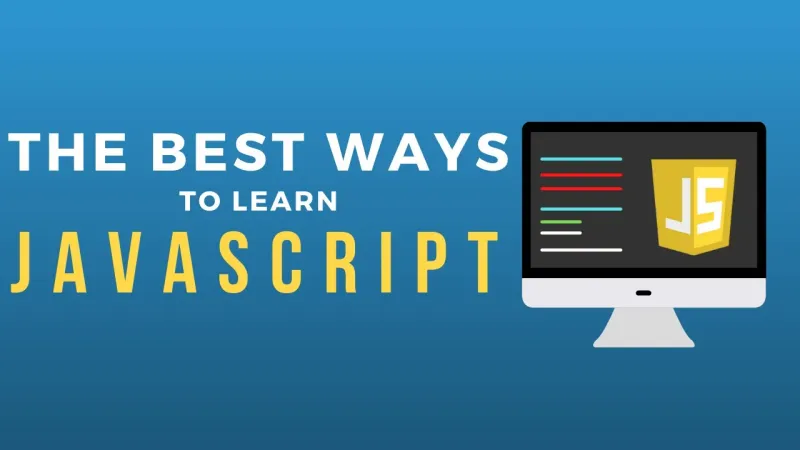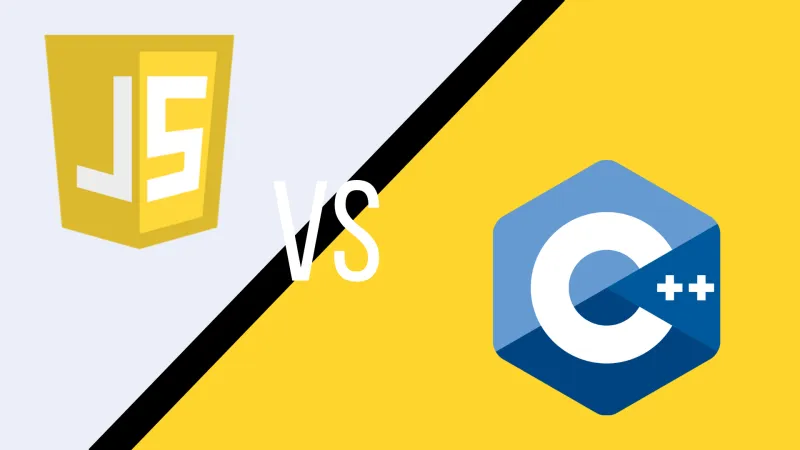JavaScript is undoubtedly one of the best languages to learn as a developer, whether you’ve been at it for years or are just starting out. More than 97% of today’s websites are powered by JavaScript. Regardless of what field you work in, you’ll likely be exposed to JavaScript at some point, as the language is firmly entrenched in the online world.
But what is the best way to learn JavaScript? That’s a tough question, because what I think is the best way to learn JavaScript may not be the best way to learn it for you. So the question you should ask yourself is, “What’s the best way to learn for me?”
I’ve compiled the 7 best methods for learning JavaScript so you can find the best way for you. I’ll show you the best methods online - and offline - and help you find the best way for you and your learning style.
#1 Learn JavaScript interactively 🔗
One of the best ways to learn anything is by getting your hands dirty and trying out the knowledge yourself, and Boot.dev has brought that exact experience to coding in JavaScript.
While understanding computer science and the theory behind programming is important, until you actually write and interact with the code yourself, you might as well be sitting on the sidelines. Practicing writing code is where you build those hard skills that are so sought after by the IT world.
Boot.dev does this by providing a web-based portal that works alongside its courses. Here, you’ll get experience crafting and solving the problems on your own, without having to mess with external downloads.
You can even practice without the courses on their site, by accessing Boot.dev’s free Playground and writing your own code right in the browser!
Boot.dev’s emphasis on interactivity makes it interesting, but it’s not even the best part. Boot.dev’s overall goal is to get you primed and ready for a career with JavaScript. Aside from hands-on practice, you’ll also be greeted with developmental techniques that are geared towards preparing you for job interviews, as well as more specialized coding skills like functional programming, making it by far one of the best ways to learn JS.
#2 Learn for free 🔗
I get it, it’s hard to invest money in an online course when:
- You’ve never studied the material, so how do you know it’s the right fit for you and you’re not wasting money on a course you’ll never finish, or
- You’ve been coding for ages, and don’t feel like dealing with the hubbub of intro courses.
That’s where learning JavaScript for free comes in handy.
My favorite ways to do this are with freeCodeCamp, The Odin Project, and Boot.dev because they both offer unique learning environments that suit your individual needs.
As we covered, Boot.dev offers intuitive interactive learning with its browser-based coding portal, but did you know it’s also free? While there is a subscription program, Boot.dev supports the idea that you should be able to try out the courses first, you just won’t have access to premium features such as achievements, certifications, and quizzes. However, you will be able to demo these features in the first chapter of each course.
freeCodeCamp on the other hand is something different entirely. This non-profit e-learning website specializes in free courses covering an insane amount of computer science-related topics, from learning to code to information security.
With over 7,000 tutorials and 40,000 students helped to land jobs at tech giants like Apple and Google, freeCodeCamp is truly a remarkable organization and a great opportunity for beginners to test out JavaScript, and for experienced programmers to get fast access to free JS material.
#3 Learn on your own 🔗
Do you learn best when you get to build and research your own curriculum? Some people thrive on researching nitty-gritty details and putting together their own resource lists. If that sounds like you, then the best way to learn may be on your own.
While mostly known for beauty gurus, music videos, and conspiracy theories, YouTube is also a fantastic source of learning material, including how to learn JavaScript.
The videos are normally short (around an hour) and offer a brief crash course on your topic of choice, perfect for researching and studying specific subjects. An example is Programming with Mosh’s Intro to JavaScript course, which is a verified channel and even has its own website where it offers more flushed-out courses.
It doesn’t end here though. Tons of individuals have dedicated their time to creating great informational videos ranging from long to short and beginner to advanced, so take the time to look around and find a channel that suits you.
It’s also worth mentioning that freeCodeCamp’s tutorials are integrated with YouTube, so you’ll find most, if not all, of their online classes there too. Needless to say, there’s an endless supply of resources here for you to learn JavaScript your own way.
#4 Learn JavaScript the fast way 🔗
In today’s world we are faced with an endless pursuit to make things faster and more efficient, and picking up a new skill is no different.
Whether you don’t have much time on your hands, are constantly dividing your attention between too many things, or just like to learn quickly, project-based learning is one of the fastest ways to learn JavaScript.
The first way is to start by finding a project you’re interested in and are determined to complete. Not only does this give you practical experience, but it leaves you with a fully functioning app or program that benefits you!
Another way is by joining an open-source JavaScript project. These are free projects and frameworks already created that you can edit and work with yourself. You’ll find a lot of these on GitHub, and they offer risk-free opportunities to work with the language.
However, if you want a project-based learning method, but don’t feel comfortable enough to jump into creating your first program, Boot.dev does employ a series of mini-projects throughout their courses, so you get the efficiency of project-based learning, but in a more secure environment. Additionally, Scrimba has a great list of JavaScript projects you can check out.
#5 The fun way 🔗
If you’re like me, after a day of work the last thing I want to do is come home, listen to lectures, and force my brain to retain crucial information as it turns to mush from the long day. Instead, I’d much rather zone out to a movie, or better yet, play some mindless games.
Well, have I got a treat for you! From the imaginative minds at Qualified, Codewars is an online competitive coding site where you’ll compete against other coders within your same skill range in solving coding problems or “katas”. As you compete and earn achievements, you’ll rise up the ranks, as well as refine and sharpen your programming skills.
Now, Codewars may not be mindless, but it certainly takes the edge off learning with its gamified environment, plus it’s a fun opportunity to meet peers and gain communal wisdom.
You do have to prove some level of understanding in the language you want to play with, however, it does cater to beginner and expert programmers. This is also an excellent tool to use alongside the other ways of learning JavaScript to practice thinking critically when programming.
#6 The old-fashioned way 🔗
Maybe fun, fast, and free isn’t your style, and you like to take a step back and do things the hard way, or should I say hardback way, with these amazing JavaScript books!
Books are a great way of having information on hand to refer back to and are perfect if you learn better with tangible items and are able to physically highlight and interact with the learning material.
The first book I want to draw your attention to is the famous JavaScript: The Definitive Guide by David Flanagan. This book is heralded as one of the original JavaScript books and has recently gone through an upgrade to include current updates to the language. It’s comprised of about 700 pages (which is shorter than the original) and provides in-depth coverage of everything from basic functions to JS extensions and tools.
Regardless of your skill level, there’s something in this book for everyone, and with the release of its seventh edition, I’m not the only one who thinks so.
However, if the definitive guide is a bit too bourgeois for you, then may I direct your attention towards the Eloquent JavaScript, which, ironically, is famed for its conversational tone and digestible writing. Written by Marijn Haverbeke, this book is divided into three parts, with part one covering fundamentals, part two discussing the history of JavaScript and the DOM, and part three exploring Node.js and factors such as speed and performance.
This book is directed at beginners, with examples and practice exercises heavily published throughout the book.
While you can learn JavaScript from these texts alone, much like Codewars, I think these are beneficial resources to have in tandem with online courses and add a lot of value to your learning.
#7 Earning a certificate 🔗
Did you even learn JavaScript if you didn’t get a certificate?
Well, yes, but it feels validating to be rewarded with a certificate at the end of your training, not only for yourself but for professionals and businesses that may require proof of your working knowledge.
Coursera is one of the top sites for this! As an online e-learning site that provides university-taught and accredited courses, as well as courses from tech giants like IBM, Coursera can get you a certificate without you needing to enroll in a university. Coursera doesn’t specialize in computer science, but it still has plenty of options like the JavaScript for Beginners class from the University of California, where you’ll learn from professors teaching at the university.
These courses often come with graded work, long-time commitments, and the occasional strict schedule, however, being able to show you know JavaScript from an established university looks good on your portfolio and helps build your reputation.
That said, there are other faster and more affordable routes to take to receive certification. For instance, with a Boot.dev subscription, you’ll receive a certificate when you complete a course for only a few bucks a month, while Coursera ranges from $45+ per month, depending on the course you take. With Boot.dev you’re also able to complete the course quicker, whereas Coursera’s courses take anywhere from 6 to 10 months.
The Best Way to learn for you 🔗
Whether you prefer learning on your own or being involved in an instructor-led course, the best way to learn JavaScript is really about the best way to learn for you.
Consider the methods discussed here and how you relate to them. You may even find yourself falling into more than one category and end up learning JavaScript in a multitude of ways.
The best place to start though is by testing out the language, which you can do for free here on Boot.dev in the Intro to JavaScript course, or by playing around in the Playground if you’re an experienced programmer.



